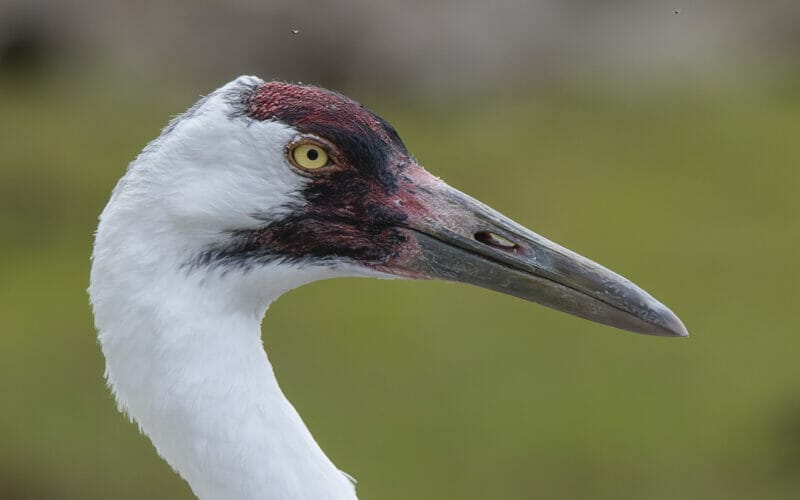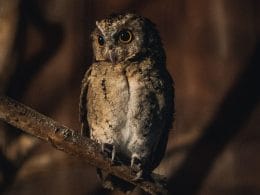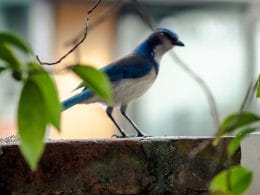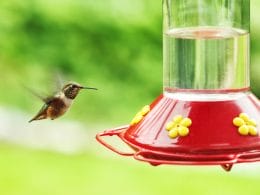The joy of watching a bird up close in their natural habitat is unbeatable for any dedicated bird watcher or a birder. However, it can sometimes be quite tricky to sneak up on a bird without spooking them away. If you want to know how to sneak up on birds and improve your bird watching game, this article is for you!
Today, we’ll provide you with some of the best tips, techniques, and tricks that expert birders use to get as close to birds as possible without being noticed!
1. Identify the Bird’s Favorite Location
It’s easy to spot a bird anywhere, but if you want to get as close as possible to one, you should make sure that they’re in their ideal habitat.
This is where most birds will be feeling the safest, which allows you to sneak up without spooking them out.
This is also an ideal tip to find more birds of the same species, which increases your chances of sneaking up on the species and taking more elaborate notes and better pictures of the bird.
Always remember that how close you are relies mainly on where you look. For example, a woodpecker would be comfortable around wooded trees while sparrows will usually be found around dense shrubs and tall trees.
2. Be Quiet As Much As You Can

The number one rule of staying out of a bird’s sight is to avoid making any loud noises that can make them detect you.
Author Note: While gearing up for the day, remember to avoid all kinds of nylon clothes. They might be highly durable but they produce unnecessary loud squishes and sounds that can easily blow your cover.
Avoid wearing any kind of shoes with squeaky insoles because they’re almost guaranteed to blow your cover.
Instead, consider using gel cushions that absorb the sounds and improve your comfort. But more about gearing up and choosing a proper bird watching outfit later.
3. Avoid Any Unnecessary Sudden Movements
One of the easiest ways to get birds, or almost any other wild animal, startled and defensive is by making a sudden move.
While sneaking up on a bird, your moves should be seamless and flawless. Sudden jerky movements and acts of excitement might get the bird nervous and drive it to fly away.
In fact, simple actions such as bending over to the ground or bringing your binoculars up to your eyes can be enough to spook a bird. For that reason, the closer you get to your bird, the more you have to move slowly and carefully.
Reading about the birds beforehand will also tell you how they act when they’re nervous, allowing you to find out when you reach the bird’s maximum tolerable proximity. Stephen Moss’s book “Understanding Birds Behaviors” is a great place to start.

4. Patience is Key
While following or sneaking up on a bird, you’ll have to take every measure possible to stay out of their line of detection, whether it’s through vision or hearing.
Your moves will be slow and the birds might move to a different spot nearby when you are almost at the sweet spot. Remember to keep your cool and be patient if that happens.
After all, the bird might shorten the distance by getting closer to you if you’re doing your stealth job correctly!
5. Use Visual Covers and Bird Blinds When Available
In some cases, the bird you’re stalking might prefer staying in open landscapes which makes it extremely difficult for you to stalk or sneak up on them.
There are specific huts that are designed for bird watchers specifically for that issue, known as “bird hides” or “bird blinds”.
These tents will be perfectly camouflaged and keep you hidden in plain sight, even in open fields. Sneaking up on a bird from a bird hide should be much easier than walking the whole distance.
A good bird blind will be highly portable while staying densely camouflaged. Also, it must contain windows from all directions to allow you to spot your target and keep a close eye on it, such as Ameristep Outhouse Hunting Blind.

6. Learn the Stalk Walk
Some bird watchers and birders use the stalk walk technique to get closer to their target without being detected. It’s a surprisingly easy technique, so you might want to give it a try.
To do it, start by raising one foot off the ground slowly and moving it forward without touching the ground.
With a quick glimpse, check the floor for noise-causing objects and decide the best spot to plant in your feet. This may sound like much but it shouldn’t talk more than a split-second.
The grass is a natural sound dampener. However, dry leaves and small twigs can make crackling sounds similar to the ones made by the birds’ predators, which will instantly spook them away.
So, in addition to walking in a stealthy way, always pay close attention to where you’re stepping so you don’t freak the birds out.
Land your toes on the ground slowly and start to shift your weight slowly to the leg in front, then repeat with the other leg.

Author Note: A good tip here is to make sure you pause for a second between every step to regain your balance. Also, practicing the stalk walk for a while will help you do it more naturally in the field.
7. Gear Up Nicely
The closer you’ll get to some birds, the more likely for them to fly away. Some people want to sneak up on birds to take good pictures and write down notes about their habitat while others want to get physically close to the birds.
If you’re one of those people who only want to have a better look at the bird, you might not need to physically sneak up on birds after all.
Instead, you might want to invest in a nice gear that does the hard part for you. This includes decent binoculars or a camera with a high-resolution optical zoom feature.
8. Avoid Flashy Colors and Lights
While sneaking up on wild animals you usually need to move downwind, so they don’t smell you.
However, most birds have a weak sense of smell but a highly receptive eye that can actually see more colors than our eyes!
For that reason, try to avoid any kind of flashy colors, reflections, or bold patterns that can easily blow your cover while sneaking up on them.
In addition to wearing proper stealth footwear, choose a camouflage outfit with colors that fit the surroundings to avoid disturbing the birds.
If you don’t have a camouflage suit, consider tan, olive, and dark green, brown, or dark blue while getting dressed.
You should also invest in a sun-protective hat that provides your eyes with shade while looking up.
9. Make Use of the Surroundings
While sneaking up on a bird, you should keep your eyes on it at all times. However, you should train and use your peripheral vision to find your path and avoid stepping on loud leaves.
This way, you’ll always be able to get closer to the bird without making any noise or lose track of the bird if it flies away.
Another way you can harness the power of nature to your advantage is by benefiting from the louder ambient sounds that birds are used to.
As you get closer to your bird, only step closer when a gust of wind blows so that the bird doesn’t hear your steps. Similarly, rain is always a good time to sneak up on birds for various reasons.
It provides a perfect cover to your sound and birds are usually distracted enough by it. Also, they usually prefer not to fly high while it’s raining. So, even if they fly away or get spooked, chances are they’re still pretty close.

10. Assess Your Bird’s Rarity and Prepare Yourself for an Accidental Encounter
This might not be a tip on sneaking up on a bird, but it’s a pretty valuable lesson that some birders learn the hard way.
Always keep the level of rarity of the bird you’re following in mind while approaching it. In other words, if you’re following a pretty common bird, always pay close attention to any rare bird encounters.

Author Note: This is one of the most common ways birders come across their most precious birds on the list. You can always sneak up on a common bird any other time but chances like these might never come again!
Wrap Up
With that said, you now have a thorough guide with multiple tips on how to sneak up on birds! While following a bird, remember to follow your instinct and keep your calm all the time because birds get spooked quite easily.
Also, you should always remember that there are other wild birds and animals out there, so you always have to put your safety first while sneaking up on a bird. We hope you enjoyed this article on how to sneak up on birds.
Lastly, make sure that you follow safety rules if you’re bird watching in a public park and get permission before following a bird to private property.
Fly high friends!
FAQ
Most areas have bird watching clubs. Check on Google of Facebook for them. Lots of these local clubs have outings you can join. You can also access recent bird sightings on eBird.
Early morning is always the best time to see birds, simply because that is when they are most active looking for food.
Invest in a good field guide and read it!










